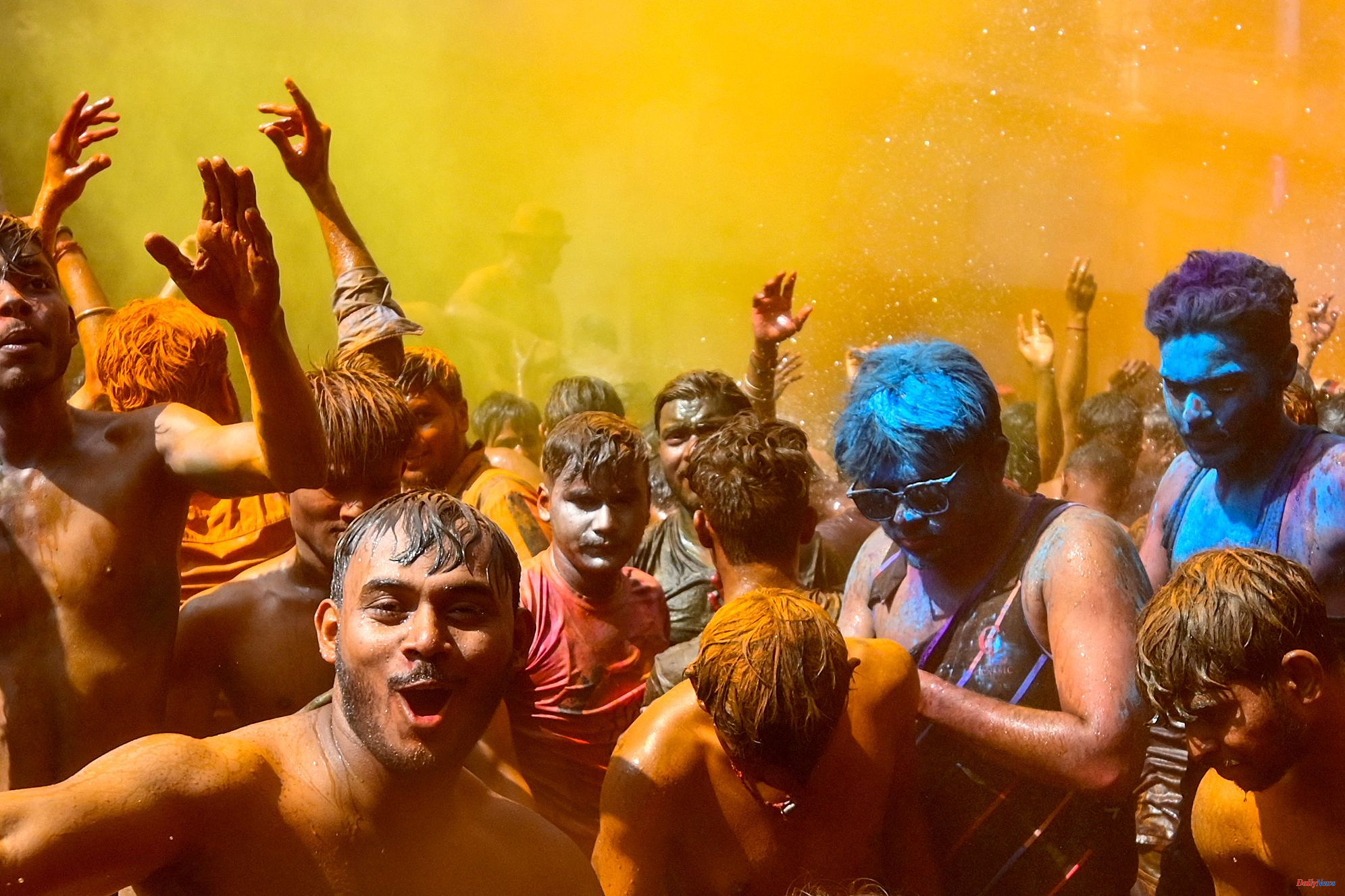Holi is one of the most colorful festivals in the world. It is the quintessential Hindu holiday that is celebrated in style in India, Nepal and in those parts of the world where they have a large Indian colony. But Holi is much more than just a wild explosion of pigments that forms a colorful cloud (called gulal).
The festival of colors is celebrated for two days between the end of February and the beginning of March, that is, shortly before the spring equinox occurs. Specifically, the festivities begin with the last full moon of the Hindu lunar month (Phalguna). In 2023, Holi takes place on Wednesday, March 8.
Holi is the party in which anything goes where all castes and classes mix exceptionally in harmony and excess. "Holi is, in effect, the festival of colours. It celebrates people's differences and, nevertheless, their union," explains Atul Shastri, a priest at a Hindu temple in the town of Gwalior, located in the center of Efe. India.
Among the typical foods and drinks prepared for the festival, the 'bhang' stands out, a concoction made from marijuana leaves and milk that according to tradition is a gift from the god Shiva himself.
The main colors that are thrown around during Holi have their meaning: red symbolizes fertility; pink, love; blue, the color of the god Krishna; yellow, that of the golden spice turmeric, and green represents spring.
It is time to go to Hindu mythology to find the origin of the festival of colors. Legend has it that Hiranyakashyapa, a king who believed himself to be a god and who forced that only he could be worshipped, tried to kill his son Prahlad on several occasions, since he venerated the god Vishnu in full view of everyone. Failing to do so, the king sent her sister Hólika, a demon immune to fire, who managed to get her nephew to sit with her at a bonfire. However, Prahlad was unharmed while his aunt was burned to death. Right after, Vishnu himself appeared as Narasimha, the lion-man, to kill Hiranyakashyapa, thereby freeing the prince.
In Holi, this mythological story is commemorated with a multitude of bonfires in which statues of Hólika are burned, a symbol of evil that only regenerative fire can destroy. This representation of the victory of good over evil is the first celebration of the festival and is called Holika Dahan or Chhoti Holi.
The next day is when the colossal war of colors begins, which is known as Holi. There is also a mythological explanation about it. We talked about the immortal love story between the god Krishna and the mortal Radha, to whom the deity applied colors to her face to make it darker since her skin was lighter than his. Since then, all lovers have painted their faces with the colors of Holi.
Music is also part of the Holi scene from early in the morning, when it is customary for groups of drummers to gather to remind everyone of the start of the holiday, followed by dancing and singing for the rest of the day.
According to the criteria of The Trust Project












